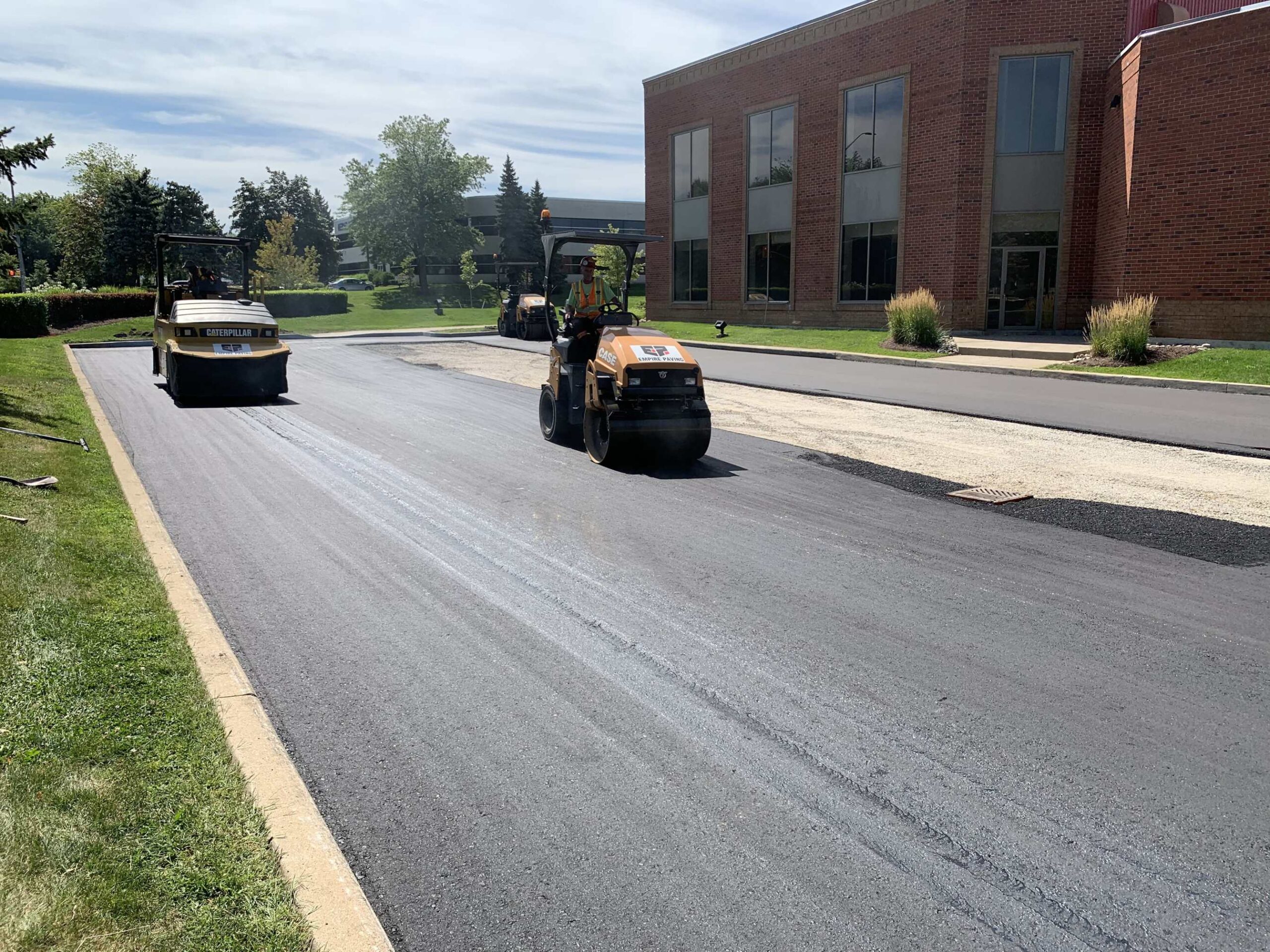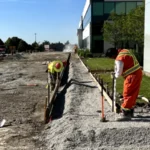Could pavement damage be limiting the life of your asphalt?
Of course, no asphalt surface is immune to wear and tear. However, identifying and addressing certain pavement issues before they negatively impact your asphalt will ensure that your surface lasts as long as possible—giving you the greatest return on your investment!
Here are some of the most common types of pavement damage and how to identify them!
Cracking
Cracking is perhaps the most common type of pavement damage, as it precedes many other types of damage and may appear in several forms. Linear or longitudinal cracking can be spotted along the joints of your pavement and may be the result of water damage or temperature changes. Fatigue or alligator cracking consists of clusters of cracks, which may be caused by temperature changes, heavy concentrated loads, or poor pavement design. There’s also edge cracking, which may be caused by poor drainage, soil movement, or plant growth.
Potholes
Potholes are large divots that may form when cracks are neglected. As cracks connect with each other, small pieces of asphalt are dislodged—leaving you with steep depressions that can cause vehicle damage. If you spot a pothole on your surface, schedule asphalt repairs with your local paving contractor!
Weathering
Asphalt, while very durable, is prone to weather damage. As the sun’s rays beat down on your pavement, your asphalt’s once-black finish will begin to turn a lighter shade of gray. This is a sign that the oxidation process is in full effect, and you will need to monitor this issue across the life of your pavement.
Rutting
Rutting is a pavement issue that is especially prevalent on roads and other high-traffic surfaces. These long indentations mirror tire paths and are usually the result when asphalt isn’t properly compacted during installation.
Corrugations
Corrugations are raised deformities in your pavement that may result if your asphalt paving contractor uses poor materials or mixtures for your pavement. These blemishes don’t appear immediately, but rather, begin to form a few years after paving. If you spot corrugations in your asphalt, contact a professional asphalt paving company to schedule full-depth patching of these areas.
Depressions
Depressions are large indentations where your pavement has settled more than other areas of your pavement. The easiest way to identify pavement depressions is to observe your asphalt surface after rainfall, as standing water will typically appear in depressed areas.
Swells
Like depressions, swells are uneven areas of pavement that may result when asphalt settles or soil shifts. Swelling may also be exacerbated by moisture and temperature fluctuations, and this issue requires full-depth patching in problematic areas.
Raveling
Raveling is characterized by small, dislodged pieces of aggregate, and typically occurs once the asphalt’s binder layer has hardened. This is an age-related issue and indicates that your pavement may be approaching the end of its life cycle. While certain repairs may be able to address raveling in a localized area, widespread raveling is not easily fixed without removing and replacing the asphalt entirely.
Are you dealing with asphalt damage of any kind? Be sure to contact Empire Paving today to resolve your issues with a professional asphalt paving contractor!







 We were very pleased with the professional job done by Empire Paving this fall.
Luciano and his team were very reliable, knowledgeable and able to handle all issues that arose during completion of this project. We would highly
recommend Empire Paving for any paving job!
We were very pleased with the professional job done by Empire Paving this fall.
Luciano and his team were very reliable, knowledgeable and able to handle all issues that arose during completion of this project. We would highly
recommend Empire Paving for any paving job!